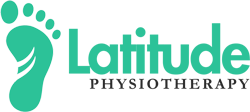If you’re an athlete, chances are you’re familiar with the occasional muscle pain, stiffness, spasms, or one of the many other joys of training and competition! These symptoms many times arise from myofascial trigger points, which are areas of knotted or tense muscle tissue that are particularly sensitive and can even cause pain in other parts of the body. Trigger points typically develop due to overuse, injury, stress, or poor posture.
A tried and true method for treating myofascial trigger points and alleviating muscle pain is dry needling. This technique involves the insertion of extremely thin, stainless steel needles into the affected muscles. It’s important to note that dry needling differs from acupuncture, which is rooted in traditional Chinese medicine and seeks to balance the body’s energy flow. Dry needling, on the other hand, simply focuses on specific anatomical structures.
Dry needling offers several benefits to athletes dealing with acute or chronic injuries, and it can even enhance their overall performance, many times unlocking latent athletic potential. Here are some of the advantages athletes can gain from dry needling:
- Pain and inflammation reduction: Dry needling stimulates the release of endorphins, which are the body’s natural painkillers, and it also disrupts the pain signals sent by the nerves. This dual action can effectively reduce pain and inflammation.
- Increased blood flow and oxygen delivery: By undergoing dry needling, athletes can experience improved blood flow and enhanced oxygen delivery to their muscles. This heightened circulation aids in the healing process and facilitates faster recovery.
- Muscle relaxation and enhanced flexibility: Dry needling helps relax the muscles and enhances their flexibility and range of motion. This can prevent further injuries and significantly boost athletic performance.
- Restoration of muscle function and coordination: Another benefit of dry needling is its ability to restore normal muscle function and coordination. By improving these aspects, athletes can enhance their strength, power, speed, and agility.

By considering dry needling as part of their training and recovery regimen, athletes can address short and long-term muscle-related issues, experience immediate and lasting pain relief, and optimize their performance on the field or in competitions. At Latitude Physiotherapy we have years of experience in dry needling athletes at all levels of competition, in various stages of recovery, or simply to improve their performance on the sidelines of a professional volleyball match, for instance! People who have used dry needling in combination with good physiotherapy say they like it, and once recovered some people choose to keep dry needling in their recovery arsenal, just like some athletes get a regular massage.
Dry needling has garnered support from several scientific studies highlighting its effectiveness in treating a range of athletic injuries and conditions. Some of these include shoulder impingement syndrome, patellar tendinopathy, plantar fasciitis, Achilles tendinopathy, and hamstring strains.
I want to emphasize that dry needling is not a panacea for all muscle-related issues. Typically, it is part of a comprehensive physiotherapy plan that incorporates various elements such as manual therapies, patient education, therapeutic exercise, and neuromuscular reeducation. By addressing underlying causes like poor posture, movement patterns, or biomechanics, these components work together to tackle muscle pain and dysfunction.
While dry needling is generally safe and well-tolerated, there are potential side effects to consider, although they are rare. These may include bleeding, bruising, soreness, infection, or temporary nerve-related weakness or pain. Choosing a qualified practitioner who adheres to proper hygiene and safety protocols can minimize these risks. Additionally, it is important to disclose any medical conditions or medications that could influence your response to dry needling.
Before pursuing dry needling for your athletic injuries or performance, it is advisable to consult with your physiotherapist. They can evaluate your condition and determine if dry needling is appropriate for your specific needs. If deemed suitable, they can refer you to a certified dry needling practitioner who will develop a personalized treatment plan.
However, it’s worth mentioning that dry needling may not be suitable for everyone. Individuals with bleeding disorders or those taking blood thinners, those with extreme needle phobia or anxiety disorders, and individuals with active infections or skin conditions should avoid dry needling.
Dry needling offers promising potential for athletes who are either recovering from injuries or just looking to enhance performance. Nevertheless, it should never be viewed as a substitute for essential aspects like proper training, nutrition, hydration, rest, and recovery. To optimize your athletic health and performance, it is crucial to follow the guidance of your coach, doctor, and physiotherapist.
References:
The Sport Journal. Perceptions of Dry Needling for Performance & Recovery in NCAA Division I Athletes. The Sport Journal. [Online] October 21, 2019. [Cited: June 6, 2023.] https://thesportjournal.org/article/perceptions-of-dry-needling-for-performance-recovery-in-ncaa-division-i-athletes/.
Tang C-T., Song B. Acupuncture and Dry Needling for Sports Medicine. Curr Sports Med Rep. 2022 Jun 1;21(6):213-218.doi: 10.1249/JSR.0000000000000968.
Ceballos-Laita L, Jiménez-Del-Barrio S, Estébanez-de-Miguel E, et al. Effectiveness of dry needling versus a classical physiotherapy program in patients with chronic low-back pain: a single-blind randomized controlled trial—PubMed (nih.gov). J Clin Med. 2021;10(17):3867.
Malliaropoulos N, Bikos G, Meke M, et al. Dry needling for the treatment of hamstring injuries: a randomized controlled trial—PubMed (nih.gov). J Orthop Sports Phys Ther. 2015 Jan;45(1):15-24.

